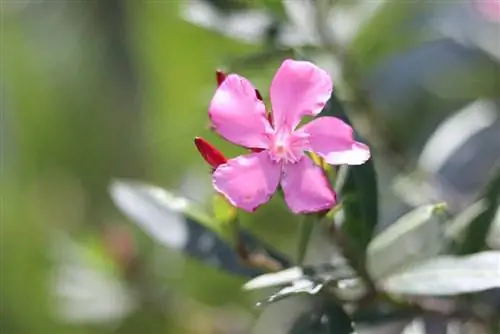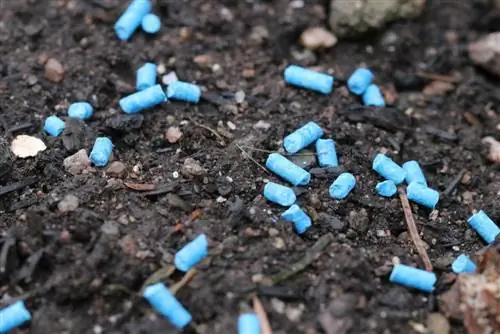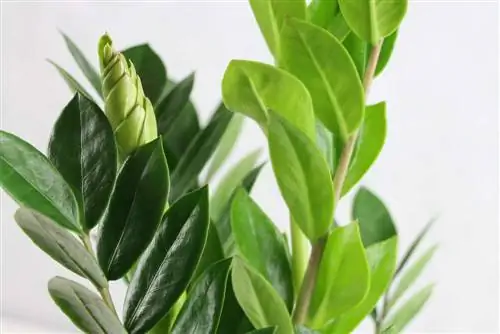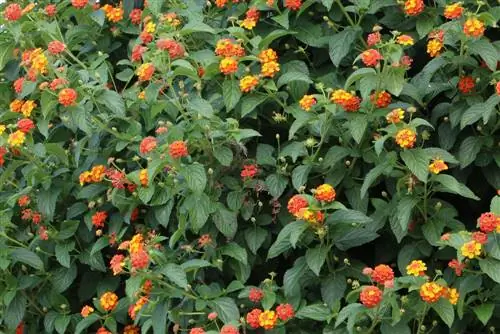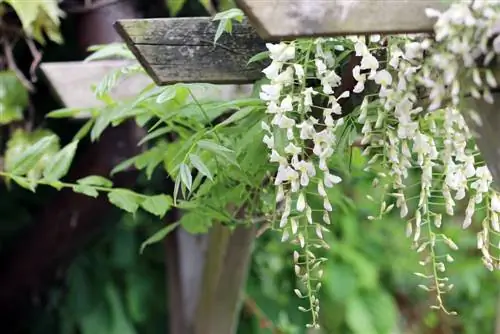- Author admin [email protected].
- Public 2023-12-17 03:39.
- Last modified 2025-06-01 06:48.
The poison warning can be found in every plant description. Oleander, also known as rose laurel, is a beautiful flowering shrub and belongs to the dogpoison family. However, the toxins in oleander are toxic not only to dogs, but to all mammals. Particular caution is required in households with children. Many people unknowingly put their children, themselves and their pets at risk of poisoning from the dangerous ornamental plant.
Poisonous in all parts of the plant - Oleander (Nerium Oleander)
In this country, the frost-sensitive oleander can usually be found as a potted plant on terraces. The plant is placed indoors to overwinter and therefore represents a continuous danger. In this article you will find all the important information about the poison content, the effects of improper handling and initial measures in the event of symptoms of poisoning. The best way to protect children and pets from poisoning is to avoid any contact with the parts of the oleander plant. It's best to avoid this plant altogether.
The poison of the oleander
The palm-sized flowers of the oleander bush delight the heart and the eye. However, contact with them is literally heartbreaking and can be life-threatening, especially for children. The toxic substance is called oleandrin, is a so-called cardiac glycoside and is found in all parts of the plant. The poison reaches its highest concentration in the evergreen leaves. Wild species in parks and public gardens contain more oleandrin than modern cultivated forms.
Cardiac glycosides influence the heart rate and can lead to serious cardiac arrhythmias and even cardiac arrest. There are over 200 different types of glycosides. The best known is digitalis, the toxin from foxglove. Most glycosides are found in plants, some of them also in the skin of reptiles, for example the poison dart frog. Oleandrin is closely related to this active ingredient. Note: There is less toxin when dried.
The plant poison is intended to prevent predators from damaging the plant. In fact, oleander leaves and flowers taste extremely bitter, making it unlikely for adults to become fatally poisoned. A horse would need around 20 grams of fresh leaves, and a human would need 1-2 grams. However, even the smallest amounts of oleandrin are enough for small children. Children explore their surroundings with all their senses and also put leaves and flowers in their mouths.
Symptoms internally
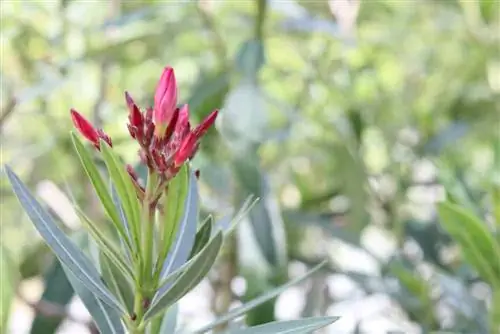
The smaller the organism, the more severe the effects of the poison. The child's body is hardly equipped against environmental toxins and reacts extremely sensitively to real toxins such as oleandrin. Children chew on leaves or put flowers in their mouths. The extremely bitter taste of oleander usually prevents the plant parts from being swallowed, but even simple skin contact with the clear plant juices can lead to symptoms of poisoning. Symptoms when taken internally:
- increased saliva production
- Nausea, nausea
- Gastrointestinal cramps
- Diarrhea
- Cardiac arrhythmias
- low heart rate
- Pupil dilation
- blue lips
- cold extremities
- Muscle tremors
- Unconsciousness
- Cardiac paralysis
- Respiratory paralysis
Warning: Consuming just a single lancet leaf of the oleander tree leads to life-threatening symptoms in small children! The poison penetrates the mucous membranes before it is swallowed and travels directly to the heart via the bloodstream.
External symptoms
The effects of the active ingredient oleandrin are comparable to those of digitalis. Consuming it can cause cardiac arrest within a few hours. But external contact also carries risks. In the USA, poisoning symptoms with heart and respiratory problems occur regularly because oleander wood is unknowingly used for smoking and barbecues. The symptoms of contact with the juices:
- Skin Irritation
- Redness
- Itching
- Eye inflammation upon eye contact
- allergic reactions due to inhalation of pollen
Warning:
You should always wear gloves when repotting and pruning. The oleander plant sap that escapes can enter the body through the smallest injuries to the skin when gardening. Children are not allowed to help with gardening.
Attention children

In children, the smallest doses of oleandrin are enough to cause symptoms of poisoning. Children explore their environment with their hands, feet and mouth. A fallen leaf or flower encourages small children to touch the plant parts and put them in their mouths. If there are children in the household, you should definitely avoid using oleander as an ornamental plant.
Please also keep an eye on rose laurel plants in the neighborhood and check whether oleander is growing in parks. It is not enough to explain to the child that he should not put parts of plants in his mouth. Babies and toddlers lack understanding of this. Parents or grandparents are never allowed to let their children play unsupervised, especially in southern countries. The same applies if you don't want to do without the beautiful ornamental shrub in your own garden.
Measures in case of poisoning
If you suspect oleander poisoning, every minute counts. Call the emergency doctor immediately or go straight to the hospital. Until medical care is possible, you should give the child plenty to drink. Tea or water are best. Milk is not suitable. Do not induce vomiting; the child may convulse and suffocate. In the hospital, the excretion of the poison is accelerated using an infusion. With timely help, there will be no consequential damage caused by the poisoning.
Child-friendly garden
There is a lot to consider before purchasing beautiful flowering plants. Oleander has no place around children. Even pets are not safe from the poison. For example, it is enough for a cat to sharpen its claws on the oleander trunk and then lick its paws, or for the cuddly bunny to nibble on a fallen leaf. Choose poison-free alternatives that also bloom beautifully, such as:
- hydrangeas
- Spierbush
- Hawthorn
- buddleia
- Viburnum Bush
- Shrub roses
Conclusion
Beautiful and very dangerous. If you still don't want to do without your beloved oleander on your balcony, terrace or in the garden, you should find out thoroughly about the dangers of poisoning so that you can take the appropriate measures in good time. Keep children and pets away from the oleander and dispose of garden waste containing rose laurel prunings in the trash and not in the compost.

